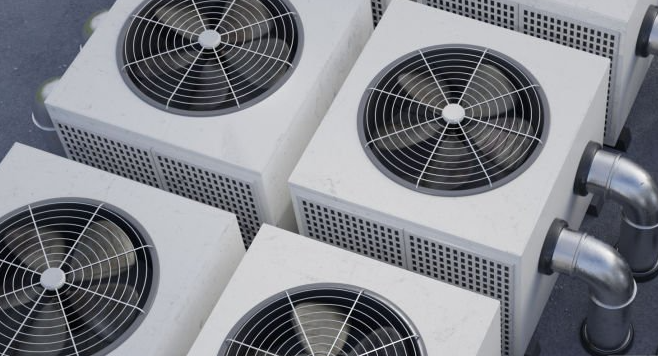Effective Shoulder Treatment: From Physical Therapy to Surgery

An orthopaedic specialist recommends shoulder treatment depending on the severity of the shoulder injury. In cases of severe damage to the shoulder joint due to advanced osteoarthritis or injury, surgery will be necessary to repair it.
In the case of conditions such as bursitis, tendonitis, frozen shoulder, mild osteoarthritis, and mild rotator cuff injuries, nonsurgical options often prove to offer sufficient relief and chances of recovery.
Let’s explore the different shoulder treatment options currently offered by shoulder pain doctors.
Conservative Shoulder Treatment Options
RICE (Rest, Ice, Compression Elevation)
Rest, ice, compression, and elevation are usually the first port of call immediately after an injury. It involves helps reduce pain and swelling and involves:
- Resting and not using the shoulder as far as possible.
- Ice or a cold pack applied to the sore area.
- Compression – wrapping the shoulder using an elastic bandage.
- Elevation – propping up the shoulder.
Medications
nter pain relievers such as paracetamol can help relieve the pain. Other prescription medications such as oral steroids, anti-inflammatory drugs, and non-narcotic pain relievers can also be taken for pain relief, but they won’t resolve the issue causing the shoulder pain.
Activity Modification
Modifying the way you perform everyday activities is a simple but effective tactic to reduce continued pain from a shoulder problem. Activity modification teaches you what movements to avoid in order to prevent future injuries.
Cortisone Injections
With cortisone injections, the doctor injects the medication into the affected area of the shoulder. These injections can reduce inflammation and pain. Depending on certain factors, relief from pain may last from weeks to months.
Because of possible damage to the cartilage within a joint, doctors restrict the number of injections that a patient can receive.
Platelet-Rich Plasma (PRP) Therapy
PRP therapy involves harvesting a small amount of blood from the patient and processing it to concentrate the platelets. The concentrated platelets are then injected into the injured area.
One of the applications of PRP therapy is wound healing in joint injury. This is possible because platelets release growth factors that facilitate tissue repair and inflammation decline.
PRP treatment doesn’t produce permanent results and must be repeated. The treatment is safe because it uses the patient’s own tissues.
Stem-Cell Therapy
Stem-cell therapy also uses the body’s own tissues. This therapy uses stem cells, often extracted from bone marrow to repair damaged tissues. Stem cells are unique in that they can develop into many different types of cells, enabling the growth and repair of different types of tissue, including cartilage, muscle, and tendons.
Stem cell therapy is controversial and not part of general medicine yet, but is gaining popularity among medical professionals.
Physical Therapy
Physical therapy can help with shoulder injuries and shoulder pain. Whether you have pain from a strained muscle, bursitis, or a frozen shoulder, this shoulder treatment is often used as treatment before surgery is considered. Physical therapy can strengthen your shoulder muscles and improve shoulder mobility.
Manual Therapy
Manual therapy falls under physiotherapy. It involves a hands-on technique whereby the therapist gently manipulates muscles, ligaments, and joints to relieve pressure on the tissue. Manual therapy techniques include joint mobilization and soft tissue massage, which can restore range of motion and alleviate pain.
Surgery
When conservative treatment options like medications or physical therapy don’t deliver the desired results, surgery can help restore mobility in the shoulder. Here are some of the most common shoulder surgeries that orthopaedic surgeons perform.
Subacromial Decompression
Subacromial decompression is a keyhole procedure to treat shoulder impingement, where the space between the acromion (a part of the shoulder blade) and the rotator cuff is too narrow, causing pain and restricted movement.
The surgeon shave a small part of the acromion to create more room for the rotator cuff. With more room, there is less friction and pain when the shoulder is used. The operation can be performed arthroscopically, using small incisions and a camera, or through open surgery. The goal is to relieve pain, improve mobility, and prevent further damage to the rotator cuff tendons.
Shoulder Replacement
Shoulder replacement surgery, also called shoulder arthroplasty, involves replacing the damaged parts of the shoulder, such as the upper arm bone and, at times, also the socket. The new parts are made of metal and plastic. The surgery is also performed to treat severe arthritis, fractures, or rotator cuff injuries.
The patient and the surgeon have a choice of different types of shoulder replacements, including total, partial, and reverse replacements. The patient’s specific condition will determine which procedure is followed.
Acromioclavicular (AC) Joint Repair for Arthritis
This is a surgical procedure to treat the effect of arthritis on the joint between the collarbone (clavicle) and the shoulder blade (acromion). This condition damages the cartilage, and sometimes the collarbone as well.
To resolve this, the surgeon removes damaged cartilage and may shave some of the collarbone to relieve pain and restore function.
Rotator Cuff Repair
Rotator cuff repair is one of the most common shoulder surgeries. Surgeons do this operation to repair torn or damaged tendons in the shoulder. Two procedures are available: open surgery and arthroscopic, which involves small incisions and a camera. During the operation, the torn tendon is reattached to the bone. Surgeons usually recommend this shoulder treatment for patients with chronic shoulder pain, or limited movement of the shoulder.
Arthroscopy for Frozen Shoulder
This is a minimally invasive surgery used to treat frozen shoulder, a condition that limits shoulder movement. This keyhole procedure involves tiny incisions, and a small camera (arthroscope) is inserted into the shoulder joint through the incisions. This allows surgeons to see what is going on in the shoulder so they can remove the cause of the restriction, such as tight tissues or scar tissue.










